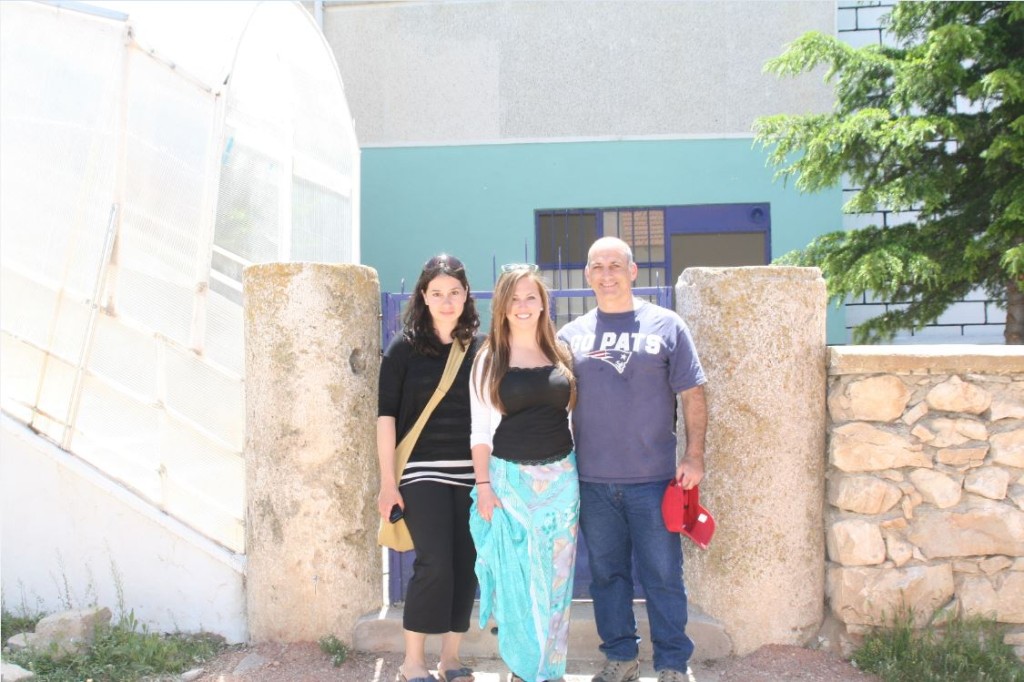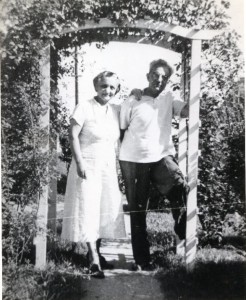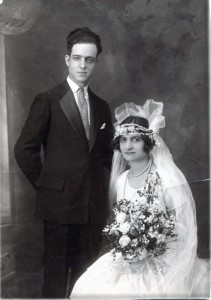1.5 Million Minus 2: DNA Testing Brings Ancestors Back from the Dead
September 4, 2015Special for the Armenian Weekly
Every Armenian family has the same story: persecution, fear, robbery, rape, murder … genocide … and the unknown. They say there can never be closure without the ability to mourn over the grave of a loved one. The denial of the Armenian Genocide by the Turkish government surely hinders closure, but for the survivors, never knowing what had happened to those left behind or lost during the death marches into the Syrian desert remained an equally harmful open wound.
My maternal grandmother had four sisters. One rescued my grandmother from the six years she had been living as a slave and the two of them ultimately found their way to the United States. Another sister starved to death in an orphanage. The two remaining sisters, one 17 and one an infant, were sent to the Syrian desert with their mother, and none were ever heard from again.

Nayiri Arzoumanian, Sarah Aghjayan, and the author in Burunkishla, May 2013 (Photo: Khatchig Mouradian)
Each time I travel to Western Armenia, I meet hidden Armenians—“remnants of the sword”—and many are searching for relatives thought to have escaped to the United States or elsewhere. Unfortunately, most often all that is known is a name: Garabed, Mariam, etc. Much too vague to allow for any connection to be made, even in the rare case where a village of origin is known. Most don’t even know the village, as their mother or grandmother was plucked from the caravans and only knew they were from Kharpert or Palu or some other region.
A year and a half ago, I joined the Armenian DNA Project through Family Tree DNA. While I was interested in my ancient DNA and the migration of man out of Africa, what really motivated me was the hope of connecting with descendants thought murdered during the genocide. Possibly descendants of the sisters my grandmother never heard from after they were sent to the desert. I wanted to bring them back from the dead.
In DNA testing, relationships are measured in shared centiMorgans (cMs), a way to quantify the probabilities. Both the total shared cMs and the longest segment are considered when determining the most likely relationship between two people. Segments longer than 10 shared cMs are generally thought to be indicative of a common ancestor.
For example, through testing, it has been shown that grandchildren have shared cMs with their grandparent that range from 875-2,365, with an average of 1,760. At the same time, a person could have shared cMs of 236-1,301 with a great aunt or uncle. So, based solely on that, if you were to have shared cMs of 900 with someone, their relationship to you could be anywhere from a grandchild/grandparent to a first cousin, once removed.
When I first received my DNA results, there were a handful of people who were identified as distant relatives by Family Tree DNA—as 4th or 5th cousins. Our shared cM was generally in the range of 30-40, with the longest segment of between 10 and 15. I contacted a few of these people and our knowledge was too scant to determine with any certainty how we might be related. Regardless, the common ancestor was very distant.
Last summer, while traveling in Western Armenia with the Arzoumanian family who also happened to hail from my grandfather’s village of Burunkishla in the Boghazliyan district of Yozgat, we discussed our possible relationship. They decided to have their father, Hrair, tested. The results showed we were 2nd or 3rd cousins; our shared cM was 132 with numerous segments over 15 cM and the longest 30 cM. Clearly, we were very closely related, which was not a complete surprise, although it was exciting to finally confirm a previously unknown relationship.
Based on our combined knowledge of family history, we believe Hrair’s maternal grandmother was a sibling to one of my great-grandparents. Again, so much family history was lost during the genocide that it is impossible to determine exactly at this time.
Then, about a month ago, the moment I had been hoping for: I received a hit on my DNA that was either a 1st or 2nd cousin, and it was someone living in Turkey! For perspective, our total shared cMs were 400 with a longest common segment of 90. This was a much closer relative and someone I knew nothing about. Could it be a descendant of my grandmother’s sisters?
I sent an e-mail to the man and waited impatiently for four days. Then, the response: The mother of the man tested was known to be Armenian. I was conversing with his son and this is the story he told.
In 1915, two sisters from Maden begin the march to certain death. The older of the sisters is a beautiful and clever young girl. Along the way, a cavalry officer desires to marry her. She agrees to do this in order to save her little sister. In fact, she demands that the younger sister be protected and live with them. Thus begins their new lives in Chermoug as Muslims.
While living with her older sister, a Muslim man sees the younger sister and falls in love. They marry and live in Chungush. Soon, three children are born. However, the husband dies young. The dead man’s brother marries his Armenian widow sister-in-law to care for his orphaned niece and nephews, and they have three additional sons together. The man whose DNA was tested was a son from this second marriage.
The older sister would have a son who died young. She died soon thereafter, leaving no surviving offspring.
While the story would seem to match what might have become of my grandmother’s sisters, the places and names did not match that side of my family. Instead, the names of the parents of those two orphan Armenian girls matched the names of my father’s great-grandparents. In addition, my great-grandmother was born in Maden.
I wrote the story of my great-grandmother, Nevart Antreassian, in an article on the Georgetown Girls. Nevart’s sister, Angel, also survived and came to the United States. 25 years ago, when I first started researching my family history, I spoke to Angel’s husband, Khoren Krikorian, and an aunt about what was known of the family. I do not know how Angel survived 1915, but it was most likely through an orphanage in Kharpert, since in 1920 she graduated from Yeprad Varjaran. Around 1922, she left for Lebanon in the final wave of missionaries, orphans, and other desperate remnants.
As for my great-grandmother, Nevart, by the time of these events she was already married and living in Diyarbakir with children of her own. Her husband conscripted into the Ottoman army and presumed dead, Nevart endured the march to Aleppo with her two young children.
In looking through my folder from 25 years ago, I found a page of handwritten notes from a phone conversation with my aunt about Nevart’s family. It was sparse, fragments here and there: father was a horseshoer, etc.
Then, two words written at the bottom: “another sister.” In talking with my parents, they knew nothing of this, but of course so much time has gone by. But what is now known is that the woman in question was my great-grandmother’s sister.
So many questions remain and most likely will never be answered.
Why the mention of only one sister? Could the older sister really have been the mother trying to protect her daughter? How could Angel have been in Kharpert until 1922 and not known her sister was alive in Chungush? Was this a situation, like so many others, where after forced marriage, conversion to Islam, and children, these “remnants of the sword” considered themselves dead to their Armenian families and were treated as such by the Armenian community?
Not surprisingly, my newfound relatives in Turkey have another Armenian grandmother in the family. She was born in the village of Havav in Palu and as late as the 1930’s she was still in correspondence with her brother in New York. Based on a letter written in Ottoman Turkish in 1934, I have identified this family as well.
It is said that the two Armenian girls, now sisters-in-law, were very close and their families’ love for them is evident.
Our mutual excitement at having found lost relatives after 100 years knows no bounds. Over the past month, we have been sharing pictures and stories and anxiously await the day when we can meet in person. Interestingly, based on where and when I have traveled through Western Armenia, it seems we know some of the same people and may have actually been together without ever knowing our family connection.
The people in this story remain victims of genocide, but they no longer are tallied in the dead. The 1.5 million has been reduced by 2.
For those wishing to learn more about the Armenian DNA Project, visit https://www.familytreedna.com/groups/armeniadnaproject/about/background.
Source: Armenian Weekly
Link: 1.5 Million Minus 2: DNA Testing Brings Ancestors Back from the Dead



